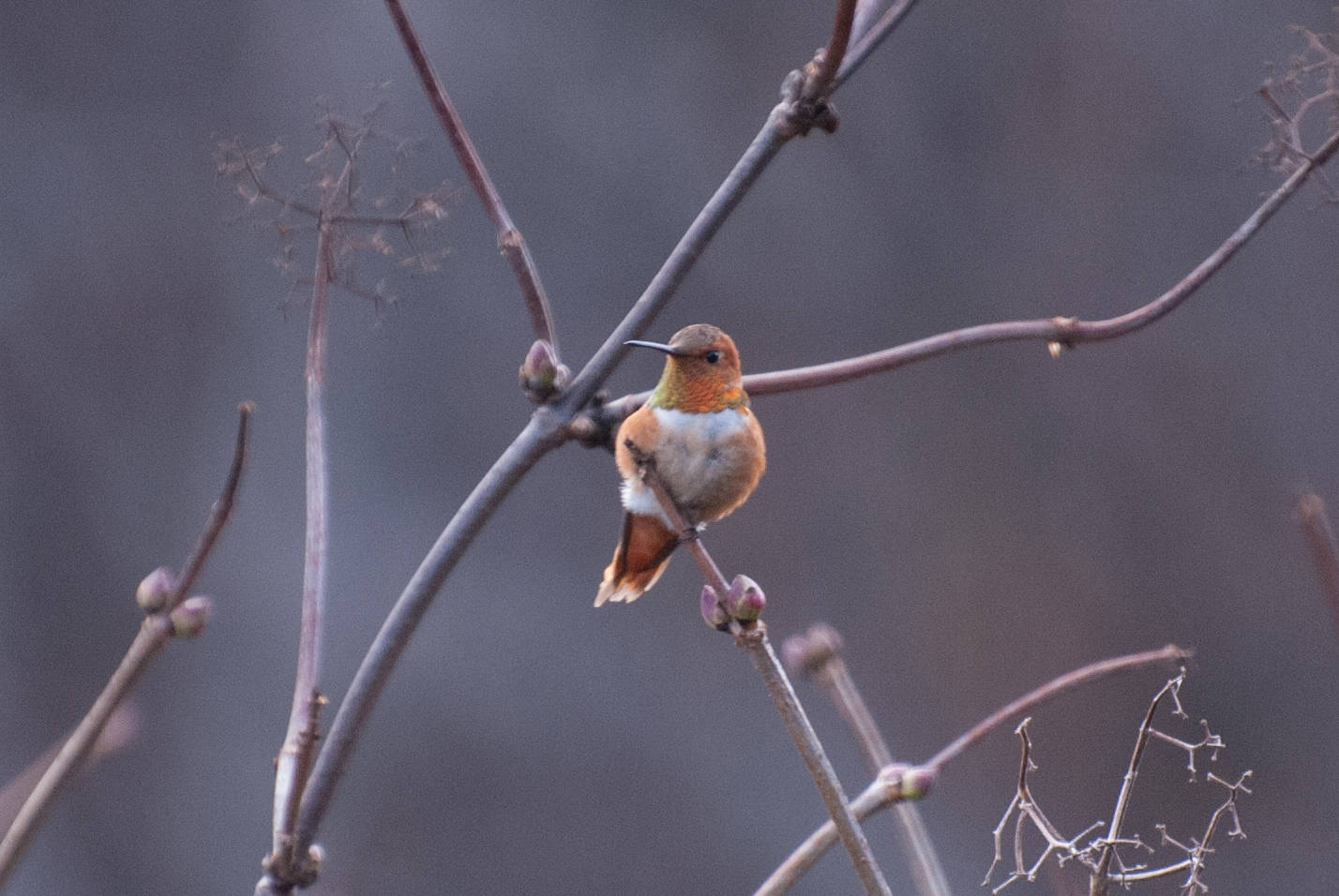The following is the latest in a monthly series of articles about birds and birding, celebrating The Year of the Bird, 2018, with authors from Kachemak Bay Birders.
Hummingbird — a rare sight in Alaska. Being in the right place at the right time to see one is pure joy. Sometimes called “jewels” or “fragments of a rainbow,” they are also about as interesting as a bird gets.
Hummingbirds are extreme. They are the smallest bird in the world and have the fastest heart beat (500-900 beats per minute), the fastest wing beat (nearly 80 beats per second), and the fastest metabolism. Their energy needs are huge, but their capacity for storage is limited — this has been compared to a truck with a 1-gallon gas tank.
When hummingbirds do not get enough food, or when it gets too cold, they enter a state called “torpor” and their metabolism rate is cut in half, helping them survive the cold nights here. Hummingbirds weigh about as much as a nickel. Their brain is the size of a BB. (However, compared to their size, proportionally they have the largest brain of any other bird.) They cannot walk or hop; they only perch and scoot sideways. They can take off and fly full-speed (50 mph) in an instant. They can fly backwards and upside-down. Amazing birds, and only found in North and South America.
Many myths circulate about hummingbirds. They will drink nectar from a flower of any color, not just red ones. Their bill is not used like a straw to drink the nectar. They use their tongue to lap it up. (Scientists found that they lap at a rate of 13 times per second.) In addition to nectar, a significant part of their diet consists of insects and spiders. One last myth: it is not true that they migrate by flying under or on top of the wings of geese. That doesn’t ever happen and couldn’t happen since the two species migrate at different times and geese fly so high there would not be enough oxygen for the hummingbird.
The photos show the two species of hummingbirds in Homer. During spring and summer, the rufous hummingbird is here, nesting and raising young. Many are reported across Kachemak Bay. Residents there report more frequent sightings and longer stays now. As true long-distance migrants, they leave in August for their long 4,000-mile journey to Mexico, the longest migration of any hummingbird.
By the second week in August and on into the fall and winter, it is the Anna’s hummingbirds that we see here. These are first-year birds that hatched from nests down in Southeast Alaska or British Colombia. After they leave the nest (fledge) they disperse, and some fly north to reach us here. Experts say they are expanding their range northward due to abundance of ornamental flowers, feeders, and warmer temperatures. Anna’s are not long-range migrants. Instead they will stay in one location for as long as they can, only moving southward a bit when conditions become too harsh for them.
Anna’s are here in Homer now. Most will return south, but some will stay on into the winter, and records exist of them surviving the winter here — with help. When it gets cold, people put out heated feeders, and in some cases, provide a warm sheltered area for feeding. Experts I talked to recommend that you not start to feed them in the fall unless you intend to faithfully continue adequate feeding all winter. With no flowers and no insects, by winter they would not survive without you. Even with heated feeders and careful attention, they will still lack the insects and spiders that they need.
One other species, a Costa’s hummingbird, was here for a while last fall. Their usual range is in Arizona and Southern California. This was a case of an individual bird not getting it right — after hatching way down there it traveled a long distance out of its range.
Hummingbirds are fascinating. With a warmer climate, more ornamental flowers planted each year, and more folks putting feeders out, we are getting to see more of them. Always interesting and a joy to watch. A flock of hummingbirds — should you ever be so lucky as to see a flock — is called a “bouquet,” a “glittering,” or a “shimmer.” I’m happy to see one, anytime, anyplace.
This article is brought to you by the Kachemak Bay Birders. For more information about Kachemak Bay Birders birding trips, meetings, and other activities and events, go to kachemakbaybirders.org. Check out also the Bird of the Month, Citizen Science opportunities, Local Bird Information and much more. It’s a Great Day to Bird!


